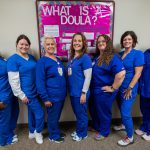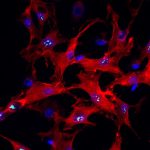
Jocelyn Mullenax has experienced kidney problems her whole life. The Harman, West Virginia, resident started experiencing kidney stones at 3 years old, but thought nothing of it at the time. Now 36, she has had three kidney transplants and a liver transplant at UPMC.
Thanks to a surgery at age 7 to remove her kidney stones, Ms. Mullenax remained healthy until 2002. Her stones eventually returned, and they were again removed, along with her gallbladder. After giving birth to her second daughter in 2005, Ms. Mullenax’s kidneys took a turn for the worse, and she was put on dialysis.
“It’s been hard and challenging living life everyday being sick and still trying to raise two children,” Ms. Mullenax said. “But, it has made me stronger.”
After receiving dialysis for three years, she underwent her first kidney transplant in February 2008. A little over a year later, she again began to experience kidney failure, leading to another round of dialysis and a second transplant in 2012.
It was around this time that she developed a new medical complication – doctors discovered she suffered from liver disease, and she underwent a successful liver transplant.
Her kidney started to fail for a third time this year, and dialysis and a transplant were again needed. This time, her doctors recommended living donation. She desperately wanted the transplant to be a success, but she needed a donor. A Facebook page was set up to help Ms. Mullenax find a living kidney donor match.
Gary Muhlestein, a carpenter from nearby Elton, West Virginia, was shown the page by a mutual friend shared by him and Ms. Mullenax, though the two had never met before. After realizing he shared a blood type, he decided to donate one of his kidneys.
“I talked with my parents, my family, some members of our church, thought and prayed on it, and this is the decision that came to me,” Mr. Muhlestein said.
 Ms. Mullenax underwent a successful living donor kidney transplant in June. The procedure was performed by Amit Tevar, M.D., surgical director of kidney and pancreas transplantation at UPMC.
Ms. Mullenax underwent a successful living donor kidney transplant in June. The procedure was performed by Amit Tevar, M.D., surgical director of kidney and pancreas transplantation at UPMC.
“Gary and Dr. Tevar saved me for my daughters,” Ms. Mullenax said. “The one thing I want to do is see them grow up, and now I can do that.”
Living donors help increase the rate of success in liver and kidney transplants, and with liver and kidney diseases killing 120,000 people per year, donors are needed now more than ever.
Thanks to social media pages such as Ms. Mullenax’s and the UPMC & Donate Life page, people are having more success finding donors. Many are surprised to discover they don’t need to be an exact blood type match or a blood relative to donate to someone in need.
“A lot of our donors are not family members,” Dr. Tevar said. “They’re people from work, friends and friends of friends. You’d be impressed by how generous people can be.”
Those interested in becoming living donors are encouraged to visit the UPMC Becoming a Living Donor page.
“You can help other people survive, and they deserve it,” Mr. Muhlestein said. “I mean, you would want someone to do it for you.”








